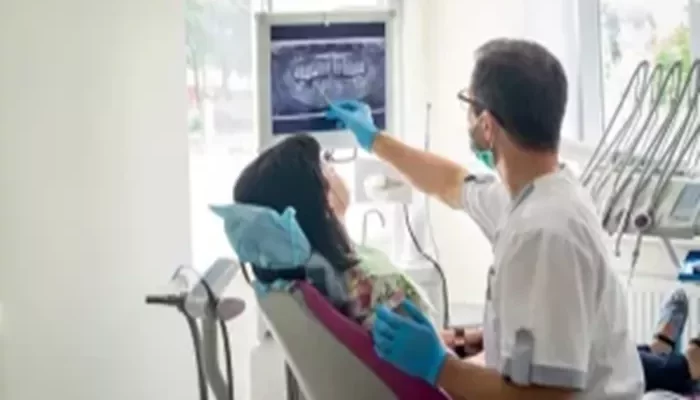Orthodontics, a branch of dentistry focused on the alignment and correction of teeth and jaws, plays a crucial role in ensuring both oral health and aesthetic appeal. Determining the optimal age for orthodontic treatment is a complex decision that requires consideration of various factors, including facial growth, dental development, and the presence of orthodontic issues. This article aims to provide a comprehensive guide to help parents and individuals understand when orthodontic treatment should begin, highlighting the importance of early assessment and intervention.
Understanding Facial Growth and Dental Development
Before diving into the specific ages, it’s essential to understand the basic processes of facial growth and dental development.
Children’s jaws and teeth undergo significant changes from birth until adulthood. The primary teeth start erupting around six months of age and are gradually replaced by permanent teeth starting from around six years old. By the time children reach adolescence, most of their permanent teeth have erupted, and the jaws have reached a significant level of growth.
Orthodontics aims to correct malocclusions, which are irregularities in the alignment of teeth and jaws. These can range from mild overcrowding to severe jaw discrepancies. Early identification and treatment of malocclusions can prevent more complex issues from developing later in life.
Early Signs of Orthodontic Issues
Orthodontists recommend that children have their first orthodontic assessment by the age of seven. This age is significant because it coincides with the eruption of the first permanent molars and the incisors, providing a clear view of the developing dental pattern. Early assessment allows orthodontists to identify potential issues and monitor their progression over time.
Some common signs that may indicate a need for orthodontic treatment include:
Crowding: When there is insufficient space in the jaw for all the teeth to erupt properly, teeth may become crowded.
Spacing: Excessive space between teeth can be a sign of jaw growth discrepancies or tooth size discrepancies.
Protrusion: Teeth that stick out too far, especially the front teeth, can be a sign of an underlying jaw issue.
Crossbite: When some teeth do not bite properly together, often resulting in one jaw being positioned too far forward or backward.
Open bite: A space between the upper and lower front teeth when the mouth is closed can be due to thumb-sucking habits or jaw growth issues.
Underbite or overbite: These are jaw discrepancies where the lower jaw is positioned too far forward (underbite) or the upper jaw is too far forward (overbite).
The Ideal Age for Orthodontic Treatment
While the age of seven is recommended for an initial orthodontic assessment, the ideal age for treatment can vary widely depending on the individual’s specific orthodontic needs. Here are some general guidelines:
Early Intervention (Phase I Treatment): Sometimes, orthodontists may recommend early intervention, also known as Phase I treatment, between the ages of seven and nine. This is typically for severe cases where early treatment can prevent more complex issues from developing. For instance, if a child has severe crowding, an orthodontist might recommend removing some primary teeth early to create space for the permanent teeth to erupt properly. Early intervention can also correct habits like thumb-sucking that affect jaw development.
Two-Phase Treatment: In some cases, orthodontists may recommend a two-phase treatment approach. Phase I addresses the most severe issues while the child’s jaws are still growing. Phase II, typically initiated in adolescence, fine-tunes the alignment and bite, ensuring a stable and aesthetic result.
Adolescent Treatment: For many individuals, the optimal time for orthodontic treatment is during adolescence, typically between the ages of 12 and 14. At this stage, most of the permanent teeth have erupted, and the jaws are still growing, allowing for effective tooth movement and bite correction.
Adult Orthodontics: It’s a common misconception that orthodontic treatment is only for children and adolescents. Adults can also benefit from orthodontic treatment to correct malocclusions, improve oral health, and enhance their smile. While adult jaws are no longer growing, orthodontists can use advanced techniques to achieve excellent results.
Benefits of Early Orthodontic Assessment
Early orthodontic assessment, even if treatment is not immediately necessary, offers several benefits:
Prevention of Complex Issues: Identifying and addressing orthodontic issues early can prevent more complex problems from developing later in life.
Guided Growth: Orthodontists can monitor jaw growth and development, ensuring that teeth and jaws align properly.
Improved Self-Esteem: Children with straight teeth and a well-aligned bite often have better self-esteem and confidence.
Efficient Treatment: Early assessment allows orthodontists to plan treatment more effectively, potentially reducing the overall duration and cost.
Factors to Consider
When determining the optimal age for orthodontic treatment, orthodontists consider various factors, including:
Severity of the Malocclusion: More severe malocclusions may require earlier intervention.
Facial Growth and Dental Development: Each child’s growth pattern is unique. Orthodontists assess facial growth and dental development to determine the best time for treatment.
Patient Cooperation: Orthodontic treatment requires active participation from the patient. Younger children may need more encouragement and monitoring to ensure compliance.
Family History: Orthodontic issues can sometimes be inherited. A family history of malocclusions can influence treatment timing.
Orthodontic Treatment Options
Orthodontic treatment options vary depending on the individual’s specific needs. Some common treatments include:
Metal Braces: Traditional braces use metal brackets and wires to gradually move teeth into the desired position.
Ceramic Braces: Similar to metal braces but use tooth-colored brackets for a more discreet appearance.
Invisalign: A system of clear, removable aligners that gradually shift teeth into place.
Headgear and Retainers: Used to correct jaw discrepancies and maintain the results of orthodontic treatment.
Surgery: In severe cases, orthognathic surgery may be necessary to correct jaw discrepancies.
Conclusion
Determining the optimal age for orthodontic treatment is a complex decision that requires careful consideration of various factors. Early orthodontic assessment is crucial for identifying potential issues and monitoring jaw growth and dental development. By understanding the importance of early assessment and intervention, parents and individuals can make informed decisions about orthodontic treatment, ensuring a healthier, more aesthetic smile for the future.
Related topics:

